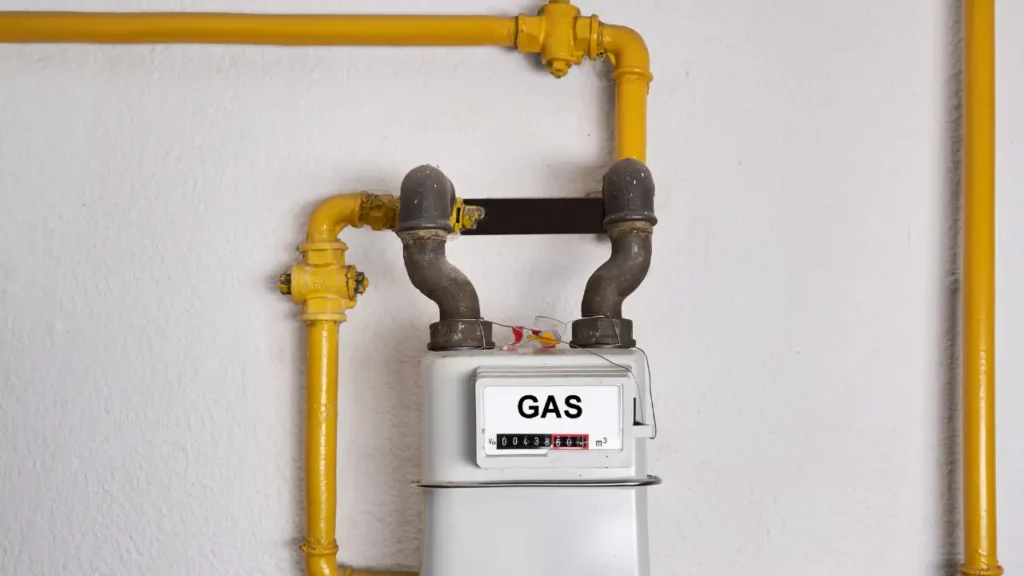Are you considering installing a gas fireplace or upgrading your existing setup? Understanding the ins and outs of gas line installation is crucial for ensuring safety, efficiency, and cost-effectiveness. A gas line for fireplace is a crucial component that ensures a steady and safe fuel supply for your heating system.
Whether you’re considering installing a new gas line or upgrading an existing one, understanding installation requirements, costs, safety measures, and best practices is essential.
This guide covers everything you need to know about gas lines for fireplaces, helping you make informed decisions and avoid costly mistakes.
Key Takeaways
- Gas line installation requires professional expertise, including permits, planning, and proper connection to your gas supply.
- Costs vary based on distance, labor, and material, typically ranging from $200 to $1,500.
- Always hire a licensed professional, ensure proper ventilation, and install carbon monoxide detectors.
- Understanding different types of gas fireplaces and their venting requirements is essential for efficient and safe operation.
- Regular maintenance, using high-quality materials, and adhering to local codes are critical for long-term performance.
Gas Line for Fireplace: Types of Pipes
When installing a gas line for your fireplace, choosing the right type of pipe is crucial for safety, efficiency, and longevity. The material you select will depend on factors like local building codes, the distance from the gas source, and your budget.
In this section, we’ll explore the most common types of pipes used for gas lines, their pros and cons, and how to determine which one is best for your fireplace installation.
1) Black Iron Pipe
Black iron pipes are steel pipes commonly used for gas lines due to their durability and resistance to corrosion. They are primarily used for natural gas or propane gas lines.
Black iron pipes are cut to the required length and threaded for connection. Teflon tape or pipe dope is used on the threads to ensure a tight seal and prevent leaks.
Black iron pipes are joined using fittings and connectors. Applying Teflon tape or pipe joint compound on the threads is crucial to prevent leaks. Wrap Teflon tape clockwise around the threads four to six times.
Alternatively, apply pipe joint compound (pipe dope) to the threaded end of the pipe and inside the connection fittings. Hand-tighten the pipe, then use two pipe wrenches to tighten the connector.
When running a new gas line, it’s important to consider the BTU input rating of the appliance and the pipe length to determine the appropriate pipe size. The “longest length” and “branch length” methods are used for sizing gas piping.
Pros:
- Extremely durable and long-lasting.
- Can handle high pressure, making it ideal for long runs.
- Meets most local building codes.
Cons:
- Heavy and difficult to work with, requiring professional installation.
- Prone to rust if not properly maintained.
- Requires threading and sealing with pipe compound, which can be time-consuming.
Best For: Long-distance gas line runs and areas where durability is a top priority.
2. Corrugated Stainless-Steel Tubing (CSST)
CSST is a flexible, easy-to-install option that has gained popularity in recent years. It’s made of stainless steel and coated with a protective layer to prevent corrosion.
Pros:
- Lightweight and flexible, making it easy to install in tight spaces.
- Requires fewer fittings, reducing the risk of leaks.
- Faster installation compared to black iron pipe.
Cons:
- More expensive than black iron pipe.
- Must be properly grounded to prevent electrical arcing, which can cause leaks or fires.
- Not suitable for outdoor use unless specifically rated for it.
Best For: Shorter runs, retrofits, and installations where flexibility is needed.
3) Copper Pipe
Copper pipes can be used for gas lines, but their use may be restricted by local codes due to potential corrosion issues. Always consult local codes before using copper pipes for gas lines.
Pros:
- Highly resistant to corrosion.
- Easy to cut and install.
- Lightweight and aesthetically pleasing.
Cons:
- Not approved for gas lines in all areas (check local codes).
- More expensive than black iron pipe.
- Can be damaged by acidic soil if used outdoors.
Best For: Indoor installations in regions where copper is approved for gas lines.
4) Flexible Gas Lines
Flexible gas lines are easy to install, especially where some flexibility is needed.
They cannot be run through walls, ceilings, or floors, and are often restricted to a maximum length (e.g., 3 feet). Flexible gas lines cannot be concealed within walls.
Pros:
- Easy to install and replace.
- Allows for slight movement of the appliance.
Cons:
- Limited to short distances (usually 3-6 feet).
- Must be replaced if damaged or worn.
Best For: Final connections between the gas line and the fireplace.
How to Install a Gas Line for a Fireplace
Step 1: Planning & Permits
Before installing a gas line, check local building codes and obtain necessary permits. Hiring a licensed gas professional ensures compliance with safety regulations.
Step 2: Choosing the Right Pipe Size
Selecting the correct pipe size is crucial for ensuring adequate gas flow. Here’s a general guideline:
| Fireplace BTU Rating | Recommended Pipe Size |
| Up to 40,000 BTU | 1/2-inch pipe |
| 40,000 – 80,000 BTU | 3/4-inch pipe |
| 80,000+ BTU | 1-inch pipe |
Step 3: Gas Line Installation Process
- Shut off the main gas line before beginning any work.
- Use a pipe cutter to achieve precise cuts.
- Apply pipe thread sealant and tighten connections.
- Use a soapy water solution to check for gas leaks before turning on the fireplace.
Cost Breakdown for Installing a Gas Line for a Fireplace
| Installation Factor | Estimated Cost Range |
| Pipe & Fittings | $50 – $300 |
| Labor | $100 – $800 |
| Permit Fees | $50 – $200 |
| Additional Work (Trenching, Drilling) | $100 – $500 |
| Total Cost | $200 – $1,500 |
Safety Precautions
- DIY installation can be risky; always consult a certified technician.
- Proper airflow prevents carbon monoxide buildup.
- Look for signs of gas leaks, such as hissing sounds or rotten egg smells.
- This allows you to quickly cut off the gas supply in an emergency.

FAQs
Can I install a gas line for a fireplace myself?
While it’s possible, it’s not recommended. Improper installation can lead to gas leaks and safety hazards. A licensed professional ensures compliance with local regulations.
How do I know if my gas line is leaking?
Common signs include a hissing sound, a rotten egg smell (due to added odorants in natural gas), or an unexplained increase in gas bills.
What size gas line do I need for a gas fireplace?
It depends on the fireplace’s BTU rating. Typically, a 1/2-inch pipe works for fireplaces up to 40,000 BTUs, but larger units require bigger pipes.
Does a gas fireplace need a dedicated gas line?
Yes, a dedicated line ensures a consistent and safe gas supply without affecting other appliances.
Is it expensive to run a gas fireplace?
Operating costs depend on gas prices and usage. On average, a gas fireplace costs between $0.50 to $1.50 per hour to run.
Affiliate Disclosure: Fireplaceadviser.com is a participant in the Amazon Services LLC Associates Program. We may earn a commission when you click on certain links on this site and purchase.

Hello!! I am Jamal Khan. I often fix my home electric heaters and gas stove problems and research the common issues in the heating units to improve my knowledge and expertise. The aim of establishing fireplaceadviser.com is to share my expertise and knowledge with my audience.












